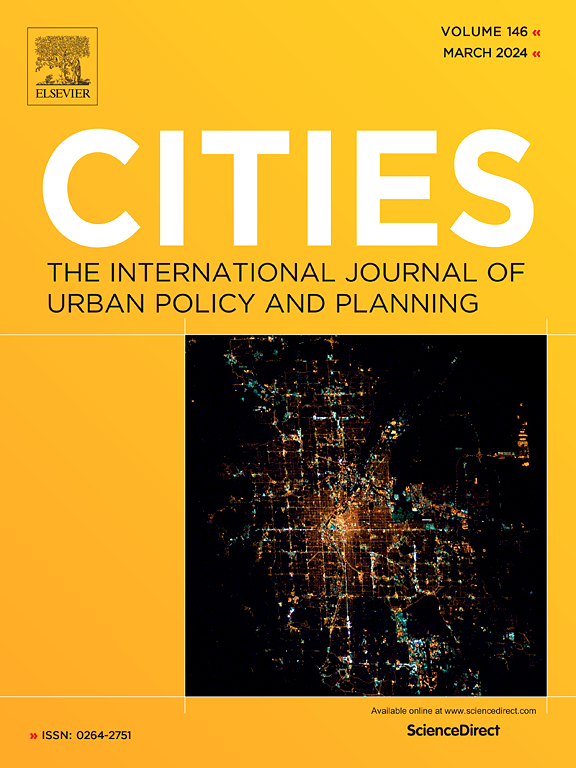Barriers to car-free streets: Identifying opponents of pedestrianization in Montreal
IF 6.6
1区 经济学
Q1 URBAN STUDIES
引用次数: 0
Abstract
Urban mobility has been dominated by motorized vehicles, posing many challenges related to the environment, citizens' health and safety, and traffic congestion. Pedestrianization (converting streets to car-free zones) is a practical strategy to reduce car dependency, promote active transportation, and enhance urban livability. However, many city residents and business owners have often opposed pedestrianization. Through a cluster analysis, this study examined opposition to pedestrianization in Montreal, Canada. To this end, an online survey was designed and administered. The collected data (1909 complete responses) was synchronized with five contextual data sources to form a large-scale dataset, including 121 variables. The results suggested that opposition to pedestrianization was associated with insufficient satisfaction with 2-wheelers/pedestrian cohabitation, attractiveness, urban furniture, cleanliness, and safety of pedestrianized streets. The supporters tended to change their travel behavior to spend more time in car-free streets, while opponents tried to change their route to avoid traveling in vehicle-free zones. The opponents included more non-cyclists, males, car owners, older people, and those living alone in neighborhoods with lower density. Opponents were more likely to be drivers and taxi users. This study highlights how pedestrianization can reduce motorized vehicle use while increasing active transportation. These insights can help policymakers address public concerns and create urban spaces that better accommodate all road users.
无车街道的障碍:识别蒙特利尔行人专用区的反对者
城市交通以机动车为主,对环境、市民健康安全、交通拥堵等方面提出了诸多挑战。行人专用区(将街道转变为无车区)是一种实用的策略,可以减少对汽车的依赖,促进主动交通,提高城市宜居性。然而,许多城市居民和企业主经常反对行人专用区。通过聚类分析,本研究调查了加拿大蒙特利尔对行人专用区的反对意见。为此,设计并实施了一项在线调查。收集的数据(1909份完整回复)与5个上下文数据源同步,形成包含121个变量的大规模数据集。结果表明,反对步行街与对两轮车/行人同居、吸引力、城市家具、清洁度和步行街安全的满意度不足有关。支持者倾向于改变他们的出行行为,在无车街道上花更多的时间,而反对者则试图改变他们的路线,避免在无车区域旅行。反对者包括更多不骑自行车的人、男性、有车的人、老年人和独居在低密度社区的人。反对者更有可能是司机和出租车乘客。这项研究强调了步行区如何在增加主动交通的同时减少机动车的使用。这些见解可以帮助决策者解决公众关注的问题,创造更好地容纳所有道路使用者的城市空间。
本文章由计算机程序翻译,如有差异,请以英文原文为准。
求助全文
约1分钟内获得全文
求助全文
来源期刊

Cities
URBAN STUDIES-
CiteScore
11.20
自引率
9.00%
发文量
517
期刊介绍:
Cities offers a comprehensive range of articles on all aspects of urban policy. It provides an international and interdisciplinary platform for the exchange of ideas and information between urban planners and policy makers from national and local government, non-government organizations, academia and consultancy. The primary aims of the journal are to analyse and assess past and present urban development and management as a reflection of effective, ineffective and non-existent planning policies; and the promotion of the implementation of appropriate urban policies in both the developed and the developing world.
 求助内容:
求助内容: 应助结果提醒方式:
应助结果提醒方式:


